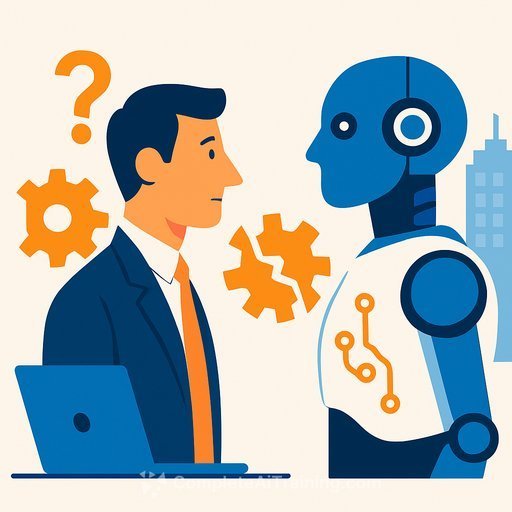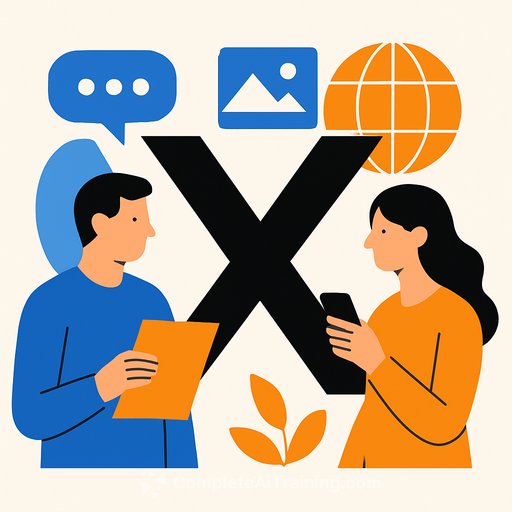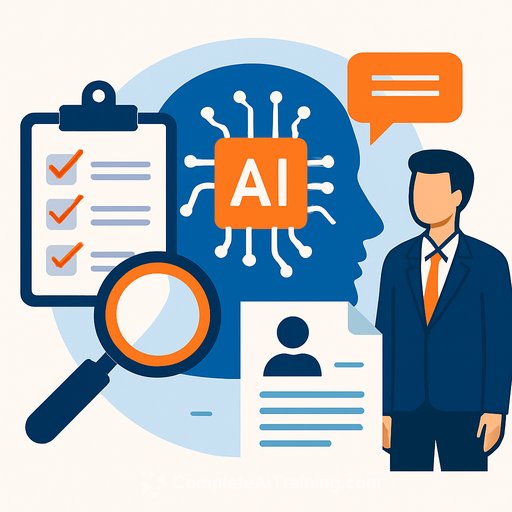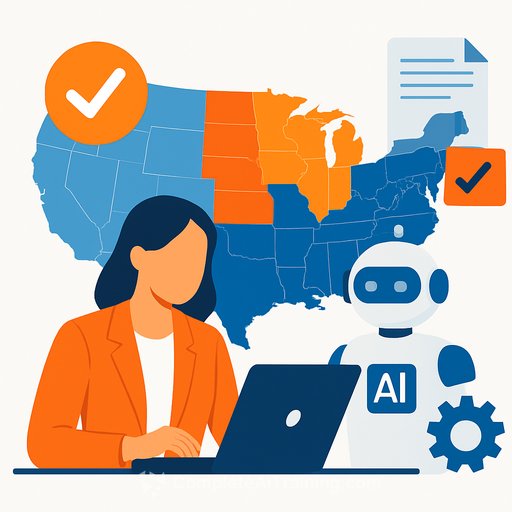AI isn't coming for your job. It's already built into it
I landed in Sydney, got a ping that my bags were about to hit the carousel, grabbed something from a store with self-checkout, then ordered an Uber, pizza, and beer before I reached the exit. Nothing unusual. That's the point. What used to be done by people is now background software.
Convenience, speed, safety - all up. The real cost shows up in headcount, job design, and how fast work changes under your feet. That's HR's lane.
The data HR should care about
The OECD reported that across 21 countries, economies with higher automation potential grew faster thanks to productivity gains. Self-checkouts lifted transaction speed by ~10%, and up to 65% of customers prefer them. It's a preview of how "routine" gets swallowed by software.
McKinsey estimates current AI can automate activities that eat up to 70% of employee time. PwC found industries most exposed to AI saw revenue per employee rise 27% vs. 9% elsewhere, and wages in AI-exposed roles grew 56% year over year. Translation for HR: exposure pays - for companies and for people who can adapt.
What this means for HR right now
1) Redesign the work before you replace the worker
Map your top 50 roles by tasks, not titles. Flag activities that are repetitive, rules-based, or text-heavy. That's where AI lands first.
- Time-in-task study: what percent of each role is automatable today.
- Retain-to-retrain plan: which people can be moved, upskilled, or redeployed within 90 days.
- Revise job architectures: create "AI-augmented" versions with clear outputs and quality bars.
2) Hire for traits, upskill for tools
Grades matter less than grit, focus, and the habit of learning. The market will favor deep specialists who learn fast and adapt faster. That starts at the intern and graduate level.
- Interview for learning velocity: "Show me the last new skill you picked up and how you used it."
- Screen for craft depth: fewer generalists, more T-shaped talent with a sharp spine.
- Portfolio over pedigree: real outputs beat resumes.
3) Build an AI-first L&D backbone
Don't wait for IT. Curate a stack of safe, approved tools and short courses tied to specific workflows: summarizing docs, drafting emails, building analyses, QA checks, and knowledge search.
- Baseline training for everyone: prompts, verification, privacy, and bias awareness.
- Role tracks for managers, analysts, recruiters, customer ops, finance, and HR.
- Measure it: tasks automated, cycle time reduced, quality metrics, and error rates.
If you need a quick catalog to seed your program, see practical picks by role at Complete AI Training: Courses by Job.
4) Set guardrails that employees trust
Publish a clear AI use policy: what's allowed, what's not, and how to handle data. Add human-in-the-loop checkpoints for decisions that affect pay, performance, safety, and compliance.
- Disclosure: employees must note when AI assists in deliverables.
- Review: sensitive outputs need human sign-off.
- Audit: log prompts and outputs for high-stakes processes.
5) Manage change like you mean it
People don't fear AI. They fear being left behind. Share the plan, the timeline, and the support available. Move early movers first, showcase wins, and bring the rest along.
- Upskill before offload: offer training and transitions ahead of automation.
- Redeployment pathways: create internal gigs linked to business priorities.
- Fair exit standards: if roles are removed, provide severance plus retraining credits.
Parents, early talent, and the shrinking chair count
Picture musical chairs. Every time the music stops, a few roles vanish. Some will reskill into new seats. Others won't. Your future grads need more than top marks.
They'll do best with a specialty, strong projects, and the stamina to learn for a lifetime. Even "human" jobs won't be safe by default. AI tutors are already piloted in schools across developing nations, and they'll get better and cheaper. Access will expand. Expectations will rise.
For business leaders (partner with HR)
Two workable paths
- Planning path: Define your service catalog. Convert it into use cases. Decide what stays human. Drive gains from process fixes, outsourcing, or automation. Then layer in AI where ROI is proven. Put a C-suite owner on it and embed AI-savvy partners in finance, HR, and product.
- Strategic path: Ringfence what makes you unique. Outsource the rest or automate it. Be careful about building your own models - infrastructure is costly and heavy to maintain. SaaS tools cost OPEX but let you move faster. Your finance team will trade capex vs. opex, people vs. platforms.
Waiting is a choice - and it's the expensive one. Form a task group now to cut costs, add revenue, or open new markets with AI.
For governments (what HR should watch)
As more work gets automated, policy needs to catch up. If companies reduce headcount due to AI, should they fund a year of salary plus reskilling? Should near-retirees get topped up to exit early? If workers re-enter roles at risk again, should clawbacks apply?
Big questions are coming: who is responsible for AI systems' harms, and what minimum standards should apply if sentience becomes a live issue? HR should track these debates - they will shape benefits, retraining mandates, and legal exposure.
A 90-day HR action plan
- Days 1-30: Task-map 10 priority roles. Approve an AI use policy. Launch baseline training.
- Days 31-60: Pilot three use cases with clear metrics (time saved, quality, error rate). Start a redeployment program.
- Days 61-90: Update job architectures. Tie AI skills to performance and pay. Publish results and scale.
The bottom line
AI doesn't announce itself. It shows up as self-checkout, faster inboxes, and systems that do the boring work without complaint. The upside is real. So is the disruption.
HR's job is to turn that tension into policy, skills, and trust. Don't wait for the music to stop. Start moving the chairs.
Your membership also unlocks:






